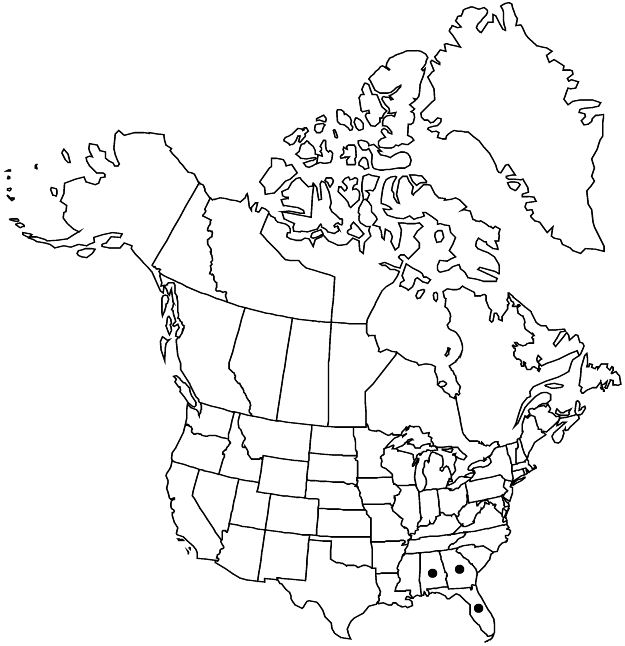Crataegus visenda
Biltmore Bot. Stud. 1: 79. 1902.
Shrubs or trees, 100 dm. Stems: trunk bark dark gray or brownish, rough; twigs ± flexuous, new growth pubescent, 1-year old dark brown; thorns on twigs few to numerous, straight, 1-year old very dark, slender, 1.5–3 cm. Leaves: petiole slender, length 25–40% blade, winged distally, pilose, sessile-glandular; blade rhombic-elliptic to rhombic-obovate or trullate, 1.5–3 cm, thin, base ± broadly cuneate, lobes 0, or 1 or 2 per side, sinuses shallow, lobe apex subacute, margins obscurely crenate teeth sharper young, veins 3 or 4(or 5) per side, apex acute to subobtuse, abaxial surface sparsely pilose young, adaxial conspicuously pilose on veins, otherwise glabrate. Inflorescences 2–4-flowered; branches glabrate to pilose; bracteoles caducous, linear, margins glandular. Flowers 14–18 mm diam.; hypanthium glabrous or pilose; sepals triangular, margins irregularly glandular-serrate; stamens 20, anthers pale to bright purple; styles (2 or)3–5. Pomes orange or orange flushed red to red, suborbicular to pyriform, 10–12 mm diam., glabrous; sepals recurved; pyrenes (2 or)3–5.
Phenology: Flowering Apr; fruiting Sep–Oct.
Habitat: Dry woods, gravelly ridges, sandy soil
Elevation: 20–100 m
Distribution

Ala., Fla., Ga.
Discussion
C. D. Beadle (in J. K. Small 1903) recognized ten species in his group Visendae, from which Crataegus furtiva and C. egens have been moved to ser. Lacrimatae in this treatment.
Selected References
None.